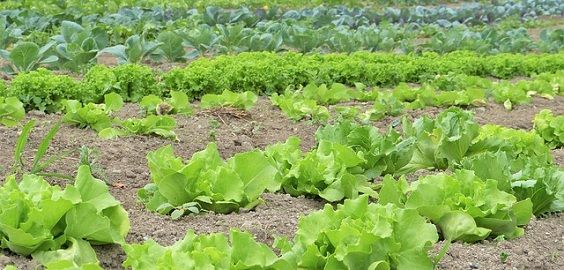Evaluating Sustainability: Commercial Farming vs Subsistence Farming Approaches
Evaluating Sustainability: Commercial Farming vs Subsistence Farming Approaches
Blog Article
Taking A Look At the Technological Developments Transforming Accuracy Farming Today
As the farming field grapples with the obstacles of feeding a growing population and ensuring sustainability, technological innovations are reshaping the landscape of accuracy farming. The complete impact of these advancements on conventional farming methods and their lasting sustainability remains a topic ripe for exploration.
Drones in Farming

Drones help with exact tracking of big agricultural areas, determining areas calling for interest, such as parasite invasions or nutrition deficiencies. This targeted approach permits the maximized application of plant foods, pesticides, and water, decreasing waste and environmental impact. Additionally, drones considerably reduce the time and labor traditionally required for area examinations, increasing efficiency and reducing operational costs.
Beyond data collection, drones are crucial in precision planting and crop splashing, ensuring uniform distribution and minimizing ground disturbance. The assimilation of drones right into farming exhibits a change in the direction of data-driven farming techniques, where innovation not just augments traditional approaches but also presents cutting-edge options for future difficulties. As the agricultural industry deals with pressures from environment change and populace development, drones provide a promising opportunity for sustainable rise and source conservation.
Satellite Imagery Advances
While drones have actually significantly improved precision farming via aerial data collection, satellite imagery continues to play an important role in widening the range and range of farming tracking. Satellite innovation uses substantial insurance coverage, allowing farmers to accessibility vital insights over comprehensive locations, which is not viable with drone innovation alone. This is particularly valuable for large ranches that require thorough, constant information.
Breakthroughs in satellite imagery have brought around considerable improvements in resolution and frequency of data capture. This timely information is critical for making educated, real-time choices to maximize crop yields and resource use.
Furthermore, the integration of hyperspectral and multispectral imagery has actually enhanced the information quality, making it possible for the precise identification of plant types, growth phases, and stress and anxiety elements. With artificial intelligence formulas, farmers can interpret satellite information better, forecasting crop efficiency and possible problems with unprecedented precision. These improvements are essential in boosting lasting agricultural techniques worldwide.
IoT in Farming
The development of the Internet of Things (IoT) in farming represents a paradigm shift in agricultural management methods, supplying unequaled connection and data-driven understandings. As IoT tools proliferate site link throughout farmland, they provide real-time tracking and control over different agricultural processes. These smart tools, that include dirt sensing units, weather terminals, and livestock monitoring systems, gather and transfer data to central platforms, enabling farmers to make informed decisions and enhance great post to read resource usage.
IoT innovation assists in accuracy farming by enhancing the precision of data gathered from the area. As an example, soil wetness sensing units can discover variations in moisture degrees, enabling specific watering scheduling, which saves water and advertises healthier plant development. Environment sensors offer essential details on temperature and moisture, assisting in bug and disease monitoring through timely treatments.
Furthermore, IoT-enabled equipment, such as autonomous tractors and drones, additionally enhance procedures by automating labor-intensive tasks and lowering human error. These advancements not only enhance performance however also add to sustainability by minimizing inputs like water, plant foods, and chemicals. As IoT proceeds to progress, its assimilation into farming methods will likely grow, driving efficiency and sustainability in the agricultural sector.
AI-Driven Analytics
Building upon the durable data collection capacities of IoT, synthetic intelligence (AI) arises as a powerful device in changing raw data into workable understandings for accuracy farming. AI-driven analytics leverages machine discovering formulas to assess substantial datasets collected from satellites, sensors, and drones.

Moreover, AI-driven analytics sustain precision farming by offering customized referrals for growing routines and watering administration. These understandings help optimize water usage, straightening with sustainability objectives. By providing real-time insights and critical guidance, AI-driven analytics not only enhance operational performance but additionally add towards lasting farming methods, securing food supply chains for the future.
Robotics and Automation
In the realm of precision farming, robotics and automation are revolutionizing farming practices by providing extraordinary performance about his and precision. These makers are furnished with general practitioners and sensors innovation, enabling them to operate with high accuracy and adjust to varying field conditions.
Furthermore, robot systems improve crop surveillance and monitoring. Drones geared up with imaging modern technology can survey big locations promptly, offering real-time information on plant wellness and dirt problems. This info is crucial for making educated choices pertaining to insect, irrigation, and fertilizing control, therefore enhancing return and source efficiency. In addition, robot weeders and planters enhance the precision of these tasks, causing much more efficient usage of inputs.
The integration of robotics and automation in precision farming likewise addresses sustainability concerns (commercial farming vs subsistence farming). By maximizing inputs and making the most of outputs, these technologies aid minimize ecological effect. Robotics and automation not only transform agricultural performance yet additionally contribute significantly to sustainable farming methods.
Final Thought
Technological advancements are fundamentally reshaping precision farming by incorporating innovative tools like drones, satellite images, IoT devices, AI-driven analytics, and robotics. Robotics even more streamline operations, leading to cost reductions and enhanced effectiveness, ultimately transforming conventional farming approaches.
Reinventing the farming landscape, drones have actually emerged as a crucial device in precision farming.IoT innovation facilitates precision farming by boosting the accuracy of information gathered from the area.Building upon the robust information collection abilities of IoT, artificial intelligence (AI) emerges as a powerful device in transforming raw information into workable understandings for accuracy farming.In the realm of precision farming, robotics and automation are changing agricultural techniques by using extraordinary effectiveness and precision.Technical technologies are fundamentally reshaping precision farming by incorporating advanced tools like drones, satellite imagery, IoT gadgets, AI-driven analytics, and robotics.
Report this page